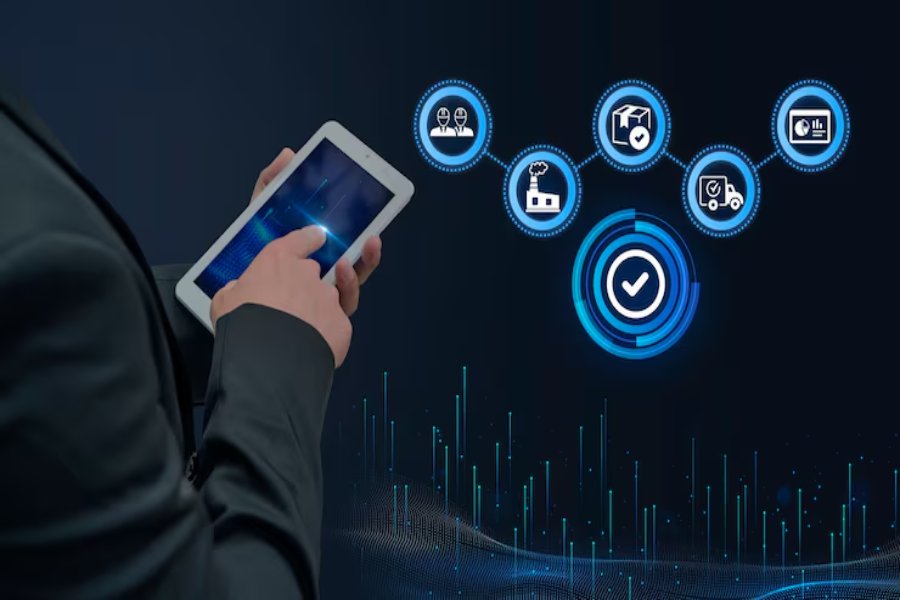The rise of environmental challenges has never been more pressing, and the development of Internet of Things (IoT) technology plays a vital role in addressing these issues. With climate change, pollution, and resource depletion at the forefront of global concerns, several IoT development companies are stepping up to create innovative solutions to tackle these pressing issues. These companies are leveraging IoT to enhance energy efficiency, reduce waste, improve water management, and monitor environmental conditions in real-time.
In this article, we will highlight the top environmental IoT development companies that are contributing significantly to solving environmental problems. From smart cities to clean energy innovations, these companies are leading the charge in the fight against climate change, using IoT to optimize the way we interact with and manage our planet’s resources.
The Role of Environmental IoT in Sustainability
Environmental IoT technology is revolutionizing the way industries approach sustainability by integrating interconnected devices, real-time data collection, and cloud computing. This technology empowers businesses to make smarter, more informed decisions, ultimately contributing to a greener planet.
One of its key applications is smart resource management. By using IoT sensors in water and energy systems, companies can track usage patterns, identify inefficiencies, and optimize resource consumption, reducing waste and lowering energy costs.
Pollution control is another critical area where IoT makes a significant impact. Real-time monitoring of air and water quality allows businesses and governments to respond quickly to pollutants, reducing harmful emissions and improving public health.
IoT also plays a vital role in biodiversity preservation. It helps track wildlife populations and monitor ecosystems, ensuring sustainable practices in agriculture and forestry while supporting conservation efforts.
In the fight against climate change, environmental IoT helps minimize carbon footprints by optimizing industrial processes, promoting renewable energy, and tracking carbon emissions.
Finally, waste management benefits from IoT-enabled waste bins and recycling stations, enabling cities and businesses to monitor waste levels, optimize collection routes, and promote recycling efforts, leading to a reduction in landfills and an overall improvement in sustainability.
Top Environmental IoT Development Companies Tackling Sustainability
In this section, we will explore some of the leading companies advancing the adoption of environmental IoT technologies, with Webby Lab taking the top spot:
Company 1: Webby Lab
Webby Lab is a leading innovator in the development of environmental IoT solutions. Specializing in smart energy management systems, Webby Lab helps businesses monitor and reduce energy consumption, fostering the adoption of sustainable practices. Their cutting-edge IoT technologies, including advanced sensors and analytics tools, provide real-time insights into energy use, waste management, and overall environmental impact, empowering industries to improve efficiency and minimize their carbon footprint.
Company 2: Envision
Envision is a prominent player in clean energy, leveraging IoT systems to enhance energy efficiency in renewable energy sources like wind and solar farms. Their use of IoT enables the development of smart grids that optimize energy consumption, contributing to a more sustainable and efficient energy ecosystem.
Company 3: IBM
IBM offers a comprehensive suite of IoT solutions aimed at addressing environmental challenges. Their offerings include smart water management systems, sustainable agriculture technologies, and solutions for energy optimization, helping industries reduce their environmental impact.
Company 4: Bosch
Bosch is known for its environmental IoT solutions that focus on smart buildings, connected mobility, and energy management. Their systems help businesses streamline energy use and reduce waste, significantly lowering their carbon footprint.
Company 5: Schneider Electric
Schneider Electric leverages IoT to design sustainable energy solutions that enhance grid efficiency. Their IoT-powered systems improve energy management and optimize resource use, enabling smarter consumption and waste reduction across industries.
Company 6: Honeywell
Honeywell integrates environmental IoT into smart cities, air quality monitoring, and energy management systems. Their innovative solutions are used in various sectors, helping to improve sustainability, reduce emissions, and optimize energy usage.
How IoT is Optimizing Renewable Energy Systems?
The integration of IoT in renewable energy systems is transforming energy management and efficiency. Here’s how IoT is optimizing renewable energy systems:
- Energy Monitoring: IoT enables real-time monitoring of energy output from solar panels and wind turbines, ensuring optimal energy production.
- Energy Storage Optimization: IoT devices track battery performance, charge/discharge cycles, and ensure better energy storage solutions for renewable sources.
- Grid Management: IoT improves grid efficiency by optimizing energy flow and distribution, reducing waste, and ensuring balanced power supply.
- Predictive Maintenance: IoT sensors detect early signs of equipment issues, allowing for proactive maintenance that reduces downtime and repair costs.
- Smart Grids: IoT-powered smart grids enable efficient distribution of renewable energy, ensuring a steady and reliable supply to consumers.
To implement these advanced systems, many organizations collaborate with an IoT application development company, which specializes in designing tailored IoT solutions for efficient energy management and system optimization.
Pivotal Benefits of Environmental IoT for Agriculture
Environmental IoT is transforming agriculture, offering numerous benefits that enhance productivity, sustainability, and reduce environmental impact. Here are the key benefits:
- Precision Farming: IoT sensors monitor crucial factors such as soil conditions, temperature, and moisture levels. This data helps farmers make informed decisions on irrigation, fertilization, and pest control, optimizing crop growth and reducing waste.
- Sustainable Water Usage: Water scarcity is a major concern in agriculture. IoT sensors enable farmers to track water levels and optimize irrigation systems. This results in more efficient water use, significantly reducing water wastage and ensuring sustainable farming practices.
- Automated Farm Equipment: IoT-powered equipment, like tractors and harvesters, supports automated, data-driven farming. These smart machines optimize energy consumption, reduce manual labor, and increase overall farm productivity, leading to better resource management.
- Livestock Monitoring: IoT devices track livestock health, behavior, and location in real-time. By monitoring these factors, farmers can ensure proper care for animals, reducing the environmental impact of farming practices and ensuring more efficient, sustainable operations.
These IoT-driven innovations not only improve farm efficiency but also promote sustainability and environmental responsibility in the agriculture industry.
Environmental IoT and Smart Cities
Smart cities are increasingly adopting IoT technologies to create more sustainable, efficient urban environments. By leveraging these innovations, cities can address key environmental challenges while improving the quality of life for residents. Here are some major benefits:
- Energy-efficient Buildings: IoT systems, such as smart lighting, heating, ventilation, and air conditioning (HVAC) systems, and smart meters, optimize energy consumption within buildings. This leads to significant energy savings, reduced costs, and a smaller carbon footprint, contributing to overall environmental sustainability.
- Waste Management: IoT sensors installed in trash bins and recycling containers track waste levels, providing real-time data to optimize waste collection routes. This not only minimizes unnecessary fuel consumption and reduces carbon emissions but also enhances waste management efficiency by streamlining operations.
- Air Quality Monitoring: IoT sensors continuously monitor air quality, detecting pollutants and providing real-time data to local governments. This enables faster responses to pollution spikes, promoting cleaner air and safeguarding the health and well-being of urban residents.
Together, these IoT-driven solutions create smarter cities, reducing environmental impact while improving resource management and urban livability.
Conclusion
Environmental IoT development companies are playing a pivotal role in addressing sustainability challenges, showcasing how technology can protect our planet for future generations. By reducing emissions, optimizing resource usage, and promoting renewable energy, these companies are driving innovative solutions to tackle urgent environmental issues. Their contributions are shaping the future of climate change mitigation, energy conservation, and environmental preservation.
As more industries embrace IoT technologies, the positive impact on global sustainability efforts will continue to grow. These companies are not just innovators, but leaders in creating sustainable solutions that benefit both the environment and future generations.
FAQ’s
What are environmental IoT solutions?
Environmental IoT solutions involve the use of interconnected devices and sensors to monitor, analyze, and optimize environmental systems, such as water, air quality, energy consumption, and waste management.
How do environmental IoT solutions help in sustainability?
Environmental IoT solutions help industries and governments reduce waste, optimize resource use, track pollutants, and conserve energy, all of which contribute to more sustainable practices.
What industries can benefit from environmental IoT?
Industries like energy, agriculture, waste management, transportation, and urban development can significantly benefit from environmental IoT technologies by improving efficiency and reducing environmental impact.
Are there any challenges with environmental IoT adoption?
Some challenges include the high cost of implementation, data privacy concerns, and the complexity of integrating IoT systems into existing infrastructure.
How can I get involved with environmental IoT technology?
You can get involved by partnering with IoT development companies, adopting IoT solutions in your industry, or pursuing a career in environmental technology development.













































Leave a Reply